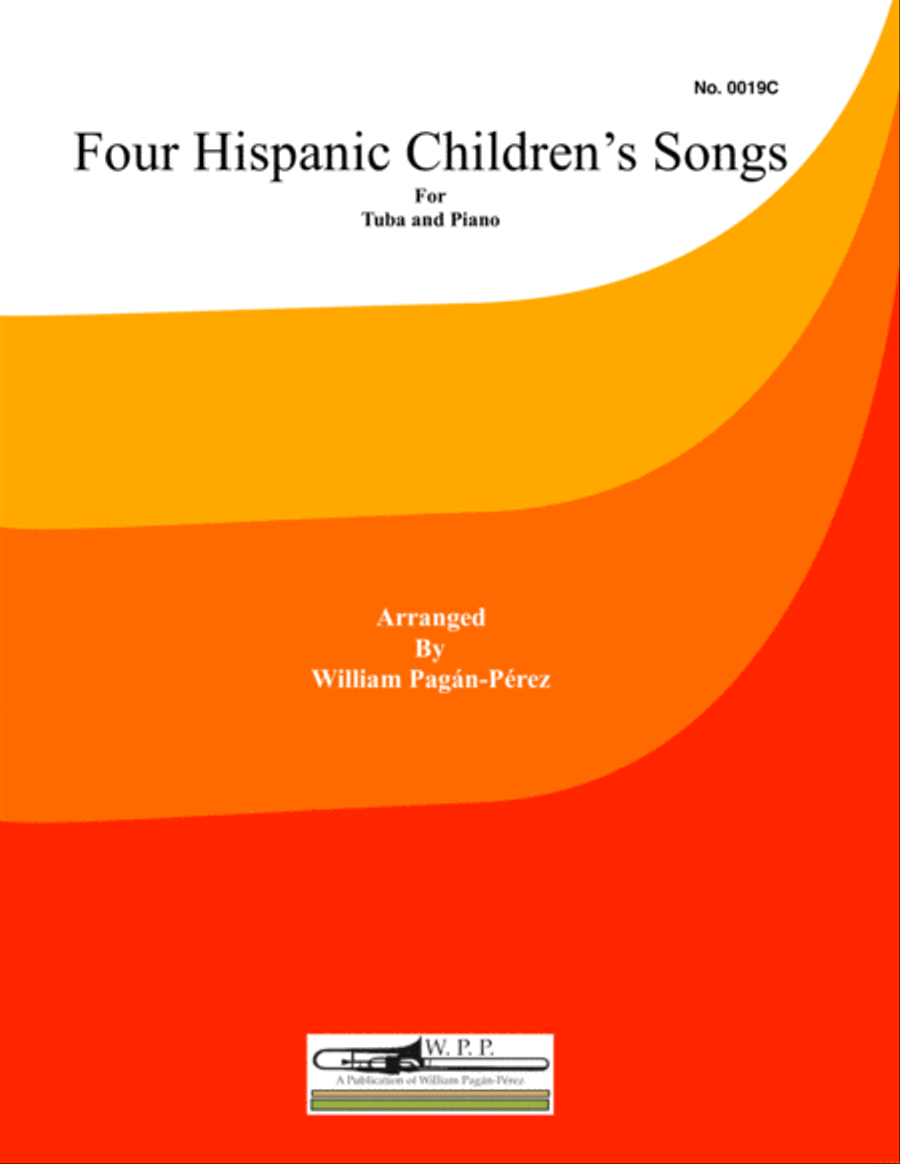Piano,Tuba - Level 2 - Digital Download SKU: A0.933819 Composed by Traditional. Arranged by William Pagan-Perez. Children,Concert,Standards. Score and part. 22 pages. William Pagan-Perez #3024447. Published by William Pagan-Perez (A0.933819). Four Hispanic Children’s Songs Doña Ana (Madame Ana) El patio de mi casa (The Garden Of My House) ¡Que Llueva! (Let It Rain!) San Serenà About the piece: Many times, great musicians transcribed and perform art song cycles by Brahms, Schubert, Schumann, or Rachmaninoff in order to express lyricism with their musical instruments like a singer does. Practicing and performing Four Hispanic Children’s Songs, give young music students a good opportunity to start expressing lyricism or to start playing beautiful melodic lines imitating the expressiveness of the human voice. Four Hispanic Children’s Songs can be programmed on student concerts, or solo music recitals in schools. Also, professional musician can perform Four Hispanic Children’s Songs on recitals, educative concerts or entertainment concerts programmed for children. Four Hispanic Children’s Songs is a four movements piece based on 18th Century children songs from Spain that became parts of the Hispano American heritage. It was arranged as a song cycle, with march textures that accompany the melody to allow a better learning and rehearsing process in class. --------------------------------- Sobre la pieza: En muchas ocasiones, los grandes músicos transcriben y ejecutan ciclos de canciones de artes compuestos por Brahms, Schubert, Schumann, or Rachmaninoff con la intención de expresar lirismo o tocar bellas lÃneas melódicas imitando la expresividad de la voz humana con sus instrumentos musicales. El practicar y tocar la música de Four Hispanic Children’s Songs (Cuatro Canciones Infantiles Hispanas) brinda a los jóvenes estudiantes de música, una buena oportunidad para comenzar a expresar lirismo o de tocar melodÃas expresivas como si fuera un cantante. Four Hispanic Children’s Songs puede ser programada y presentada en conciertos de estudiantes, o recitales de música solista en escuelas. También la pieza puede se ejecutada por músicos profesionales en recitales, conciertos educativos o concierto de entretenimiento programados para la niñez. Four Hispanic Children’s Songs es una pieza con cuatro movimientos; basadas en canciones infantiles del siglo XVIII y oriundas de España, pero que fueron adoptadas dentro de las tradiciones hispanoamericanas. El arreglista utilizó texturas de marcha para acompañar las canciones, facilitar el proceso de aprendizaje y de ensayo del estudiante en el salón de clases. Note: The MP3 Sound if from the Trombone arrangement...
